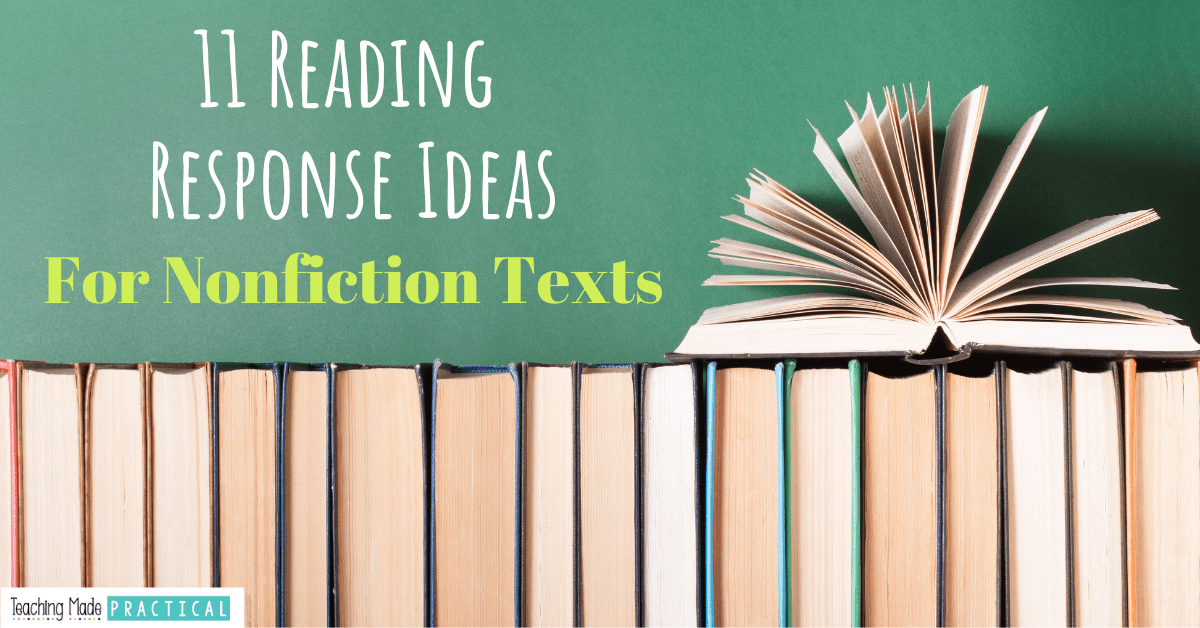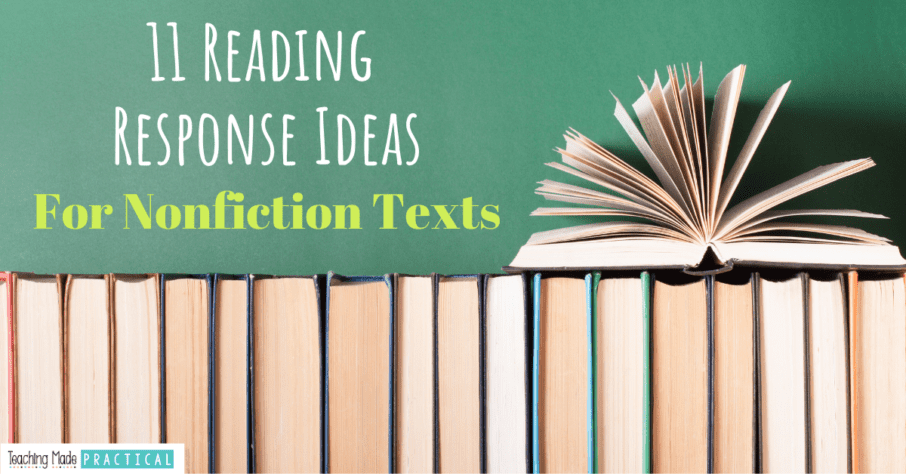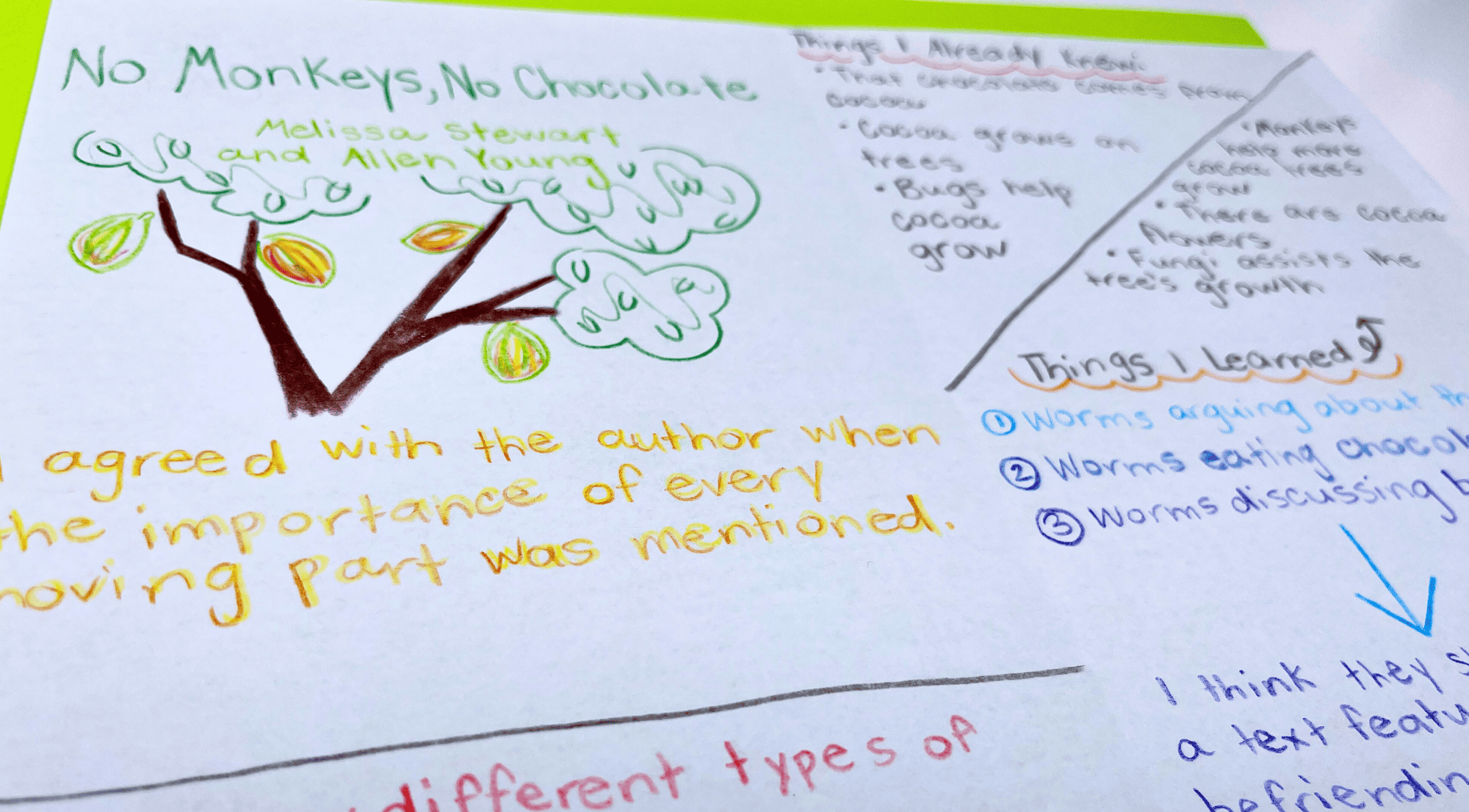
After reading a nonfiction book, use one of the reading response activity ideas below to help 3rd, 4th, and 5th grade students respond meaningfully to the text.
For a no prep version of all of the reading response activities listed below, check out this Nonfiction Reading Response Resource.
Nonfiction Reading Response Activity Ideas for 3rd, 4th, and 5th Grade
1. 3 Things I Already Knew / 3 New Things I Learned
Have you ever had a student tell you, "I already knew that!" This activity allows them to boast about what they already knew, while encouraging them to also think about knew things they learned.
After reading a nonfiction text, simply have students write down 3 things they already knew, and then 3 new things they learned. This encourages them to activate their prior knowledge while adding to their schema.
Bonus: This is also a great, easy activity to have students do while they are watching a nonfiction video.
2. Letter to the Author
After reading an informational text, have students think about what they would like to talk to the author about. What questions would they ask the author? What would they still like to know about the topic? What would they like to know about the author?
Prompt students with these questions, and then have them write a letter to the author of the text. If you can find a mailing address, you can have a quick lesson on addressing envelopes and have students send the letters in the mail!
3. Choose an Important Quote - and Respond
Want a no prep version of all of these nonfiction reading response activities?
This Nonfiction Reading Response Resource has 26 different, no prep activities that can be used throughout the school year with any nonfiction text.
4. Think about the Text Features
One of my favorite things about teaching informational text is getting to teach about nonfiction text features! If your upper elementary students have already been introduced to nonfiction text features, use this as an opportunity to review.
You could have students:
- list all of the text features they found
- go on a text feature scavenger hunt
- think about which text feature was the most useful to them
- think about which text feature was the least useful
- think about what text features they could have added to the text
If your students have not been introduced to text features, then use a nonfiction book to help introduce this skill. These text features ideas and freebies should help.
5. Countdown the Most Important Facts
Nonfiction texts are full of facts, but not all of the facts are equally important. Being able to distinguish between important and unimportant facts is helpful for summarizing, main idea, and more.
Have students choose 5-10 facts from the text, and rank them in order from the most important facts to the least important facts. This is a simple activity that all students will be able to do confidently, but the ranking encourages some higher level thinking.
6. One Pager
If you haven't tried using one pagers in your upper elementary classroom yet, now is the perfect time.
The concept is simple - students respond to the text the have read using one sheet of paper. You can have them include whatever you want - quotes, visual images, important vocabulary, a summary, author purpose, author bias, etc.
Providing clear directions and a framework are a must to maximize the impact of the one pager. Use the one pager activities in this Nonfiction Reading Response Resource for a no prep option.
7. Find the Fib
This is an activity that 3rd, 4th, and 5th grade students love, and that can be adapted to almost any subject area.
As a reading response activity, simply have students write 2 true statement about the text, and one fib. A partner then tries to figure out which statement is the fib. Simple, yet powerful.
Check out these other ways to use Find the Fib in your classroom.
8. Poetry Writing
Writing poetry can be daunting - for both teachers and students. But it is a meaningful activity that will benefit 3rd, 4th, and 5th grade students.
This Nonfiction Reading Response Resource includes scaffolding to help students effectively write the following poems in response to reading a nonfiction text:
- 2 rhyming couplets – 1 about something new they learned and one about something they already knew
- A cinquain poem about the topic of the text
- An acrostic poem about the topic of the text
- A shape poem about the topic of the text
- A “Word Sonnet” (1 word for each of the 14 lines) using only words found in the text
9. Ask Meaningful Questions
Teachers ask a lot of questions - but allowing students the time and opportunity to ask their own questions can be even more meaningful.
After reading a nonfiction text, let students come up with their own questions. They can ask questions about the text, the author, the topic, the text structure, the main idea, etc. These tips for teaching students how to ask meaningful questions about a text might help.
10. Think About the Text Structure
Pretty much every 3rd, 4th, and 5th grade student I know would benefit from more practice with nonfiction text structure. If your students have already been introduced to this difficult skill, then have them respond to the text by reflecting on the text structure.
An uncomplicated way to do this is to have students draw a graphic organizer that fits the structure of the text and fill it in using information from the text.
If your students haven't been introduced to text structure yet, then this text structure freebie might help. Or, check out these sentence examples that are great for introducing students to the main nonfiction text structures.
11. Compare and Contrast to Another Nonfiction Text
Give students an opportunity to make a text-to-text connection by having them compare and contrast the text they just read with another nonfiction text.
The Venn Diagram is the upper elementary teacher's go to for comparing and contrasting. If you want to shake it up, then check out these 9 other ways to compare and contrast.
Want This Reading Response Freebie?




